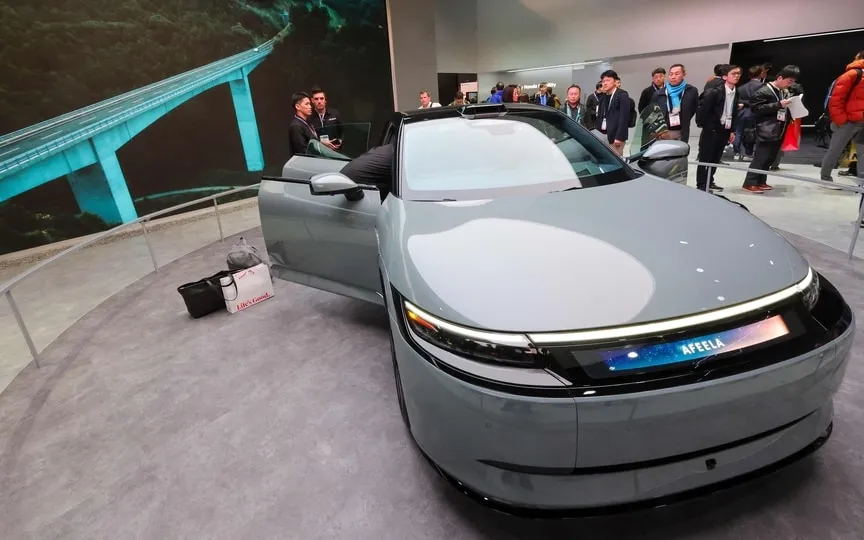Electric vehicles are becoming the preferred choice for luxury car brands like Cadillac, BMW, and Mercedes, as they embrace the most advanced and extravagant car technology.
Electric vehicles are revolutionizing the traditional driving experience, challenging long-held notions from regenerative braking to the quietness of battery-powered cruising. However, one aspect that is also undergoing a surprising transformation is the interior light. The traditional jaundiced bulb that used to illuminate when a car door was opened has been replaced by a vibrant LED disco. Nowadays, the interior of almost every electric car is adorned with lights in various areas such as the dashboard, door frames, foot wells, and ceiling.
For example, drivers of the Cadillac Lyriq can change the cabin lights to almost any color shade using the color wheel on the touchscreen. The BMW XM Hybrid, on the other hand, features recessed lights that line the entire bodywork, making the car feel like a classy club or museum, depending on the shade chosen. At night, the cabin of the Mercedes EQS SUV is a symphony of lights controlled by the gas pedal: Drive away from a traffic light and they pulse red.
When you hear the car manufacturers tell it, the right lighting goes a long way. “Fill the cabin with light that reflects mood or creates emotion,” Cadillac says of the Lyriq’s environmental options. But really, the lights are a cheap trick — and that’s kind of the point, says Maeva Ribas, president of The CARLAB Inc., a consulting firm that helps auto giants develop new vehicles. As automakers go electric, they’re sending more resources—budgets and brains—directly to battery-powered models. This means that anyone looking for the latest, greatest, and frivolous automotive innovation will increasingly find it in electric cars.
“All the cool new stuff, generally speaking, is going into these new electric vehicle products because there’s some kind of cap on the capital that can go into the older ICE platforms,” says Gartner Inc. auto analyst Mike Ramsay.
Take the BMW iX. Its stereo is turned up by running a finger in the air, its doors are heated, and the car’s yawning sunroof snaps from crystal clear to opaque at the push of a button. Rivian’s R1T pickup and R1S SUV have built-in air compressors, so they can inflate their own tires after off-roading.
In the Fisker Ocean, the center display rotates from portrait to landscape (the automaker calls it “Hollywood mode”), while the Polestar 2 has an adaptive air filter that kicks into higher gear when it detects pollen and pollutants. The Genesis GV70 has active noise reduction in the cabin and a fingerprint sensor that identifies the car to those behind the wheel. In the Nissan Ariya, one button moves the entire center console – gear shifter, cup holders, etc. – to the back, giving the driver more room in front and a Captain Kirk cosplay.
All this peacocking in the EV cockpit doesn’t mean gas cars are going away: Global EV sales are expected to grow by just 19 percent in the third quarter this year, according to a BloombergNEF forecast. Many old gas-burning platforms are being expanded as car leaders put the brakes on the transition to electric cars. But Ramsay expects the R&D pace in particular to focus on electric models. “From now on [for gas-powered cars], it’s going to be iterative,” he says. “We want electric cars to look more technically advanced.”
At CARLAB, Ribas says he and his team are constantly being asked by automakers to stuff EVs with as many tech gadgets as possible. He says it’s a smart way to cover the dismal economics of electric powertrains, and especially the high cost of batteries.
“Unfortunately, right now all [OEMs] are taking what we call the shotgun approach,” he says. “We pack stuff into cars – a bunch of features that don’t necessarily add value to the consumer.”
For example, the BMW iX has a battery capacity of 110 kWh, which costs BMW about $15,000, according to BloombergNEF. That’s the main reason for the model’s $87,100 price tag — nearly a third more than a similarly sized gas-burning BMW. It’s fare made more palatable with a little cockpit magic.
For example, why not have an electric car app that changes the music volume depending on how the car is driven? That’s how Mercedes debuted at CES last week as part of a collaboration with musician Will.i.am. “Every drive has a different version of whatever song they’ve driven to,” the Black Eyed Peas founder told Car and Driver.
Ironically, interior innovation is more evident outside of luxury brands. Ford’s customers, for example, aren’t excited to pay $43,000 for a small SUV — the starting price of its electric Mustang Mach-E — when a dead-dinosaur-powered Mustang starts at $31,000. That’s one reason the Mach-E has an oversized iPad in the center stack, while internal combustion Mustangs have something more comparable to a Kindle.
“In general, automakers have realized that affordable electric cars are not feasible,” says CARLAB founder Eric Noble. “So if you’re only going to sell 20,000 units a year, you might as well have happy people and they’re $70,000 cars.”




